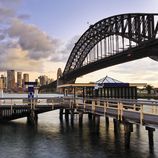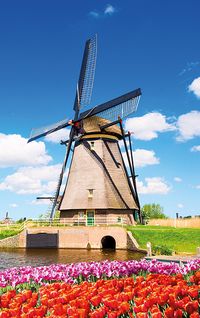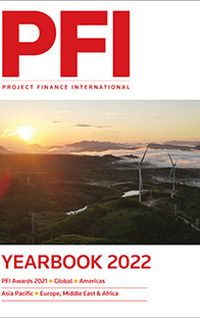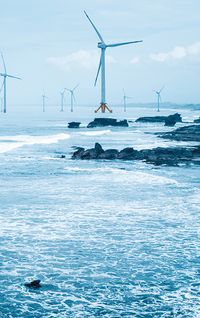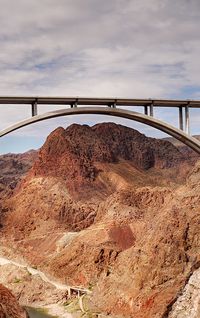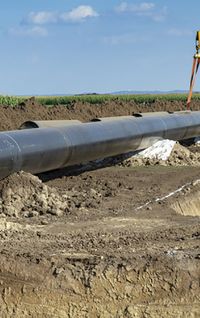Every now and then a project comes along that is a genuine milestone. The Warsan waste-to-energy project in the Emirate of Dubai was successfully financed in June this year. By Belinda Knox, Director Investment, I-Environment Investments, Peter Lembrechts, Head of Concessions & Assets, Besix Middle East, and Richard Keenan, partner, Covington.
The Warsan waste-to-energy (WtE) project, at a glance, can be summarised as follows:
* The procuring authority is the Dubai Municipality, which has signed a 35-year concession agreement with the project company, Dubai Waste Management Company (DWMC). Under the terms of the concession agreement Dubai Municipality is the sole supplier of waste to DWMC. The Warsan WtE plant has been designed to process approximately 1.9m tonnes of municipal waste per year with the capacity to generate around 200MW of electricity from a thermal power plant driven by heat and steam produced from waste incineration.
All electricity generated by the Warsan WtE plant will be supplied to Dubai Municipality under the concession agreement. Some of this electricity will be utilised by a waste-water treatment plant located adjacent to the project site and any excess electricity will be supplied by Dubai Municipality to Dubai Electricity and Water Authority (DEWA) under a separate power purchase agreement.
* The project site, which is owned by Dubai Municipality, is located approximately 25km north-east of Dubai’s city centre in the Warsan industrial area;
* The project sponsors are Besix, Hitachi Zosen Inova (HZI), Dubai Holding, DUBAL Holding, Itochu Corporation and the Tech Group. The EPC contractor is an unincorporated joint venture between Besix Construct LLC and HZI, and the O&M contractor is a limited liability company jointly owned by Besix and HZI;
* The total debt for the project is US$927m. Approximately half of the debt – US$452m – will be provided by Japan Bank for International Cooperation (JBIC) and the remainder by a group of commercial banks, including Standard Chartered Bank, Société Générale, KfW IPEX, Crédit Agricole, Siemens Bank, Sumitomo Mitsui Banking Corporation and Mizuho Bank. Nippon Export Investment Insurance (NEXI) is providing coverage for US$380m of the commercial bank debt;
* Construction commenced in 2020 and completion of the project is scheduled to occur in 2024.
The Warsan WtE project is not the first waste-to-energy project to be successfully financed in the Middle East. It is the second. The accolade for the very first WtE project-financed in the Middle East goes to the Sharjah WtE project, which achieved financial close in December 2018. However, once completed, the Warsan WtE Plant will be one of the largest waste-to-energy plants developed anywhere in the world. By way of comparison, the Sharjah WtE Plant is designed to process about 300,000 tonnes of municipal waste each year and provide 30MW of power capacity. In terms of overall project cost, the Sharjah WtE Plant is estimated to cost around US$225m. Based on any of these metrics, the Warsan WtE Plant is over six times larger than the Sharjah WtE Plant.
The Warsan WtE project is the first major PPP project procured by the Dubai Government outside the IPP sector. Since the launch of the first phase of its IPP programme in 2012 , there has been little activity in the PPP sector in Dubai prior to the closing of the Warsan WtE project, other than DEWA having successfully procured several solar and one coal-fired IPP.
In 2015, the Dubai Government passed a public-private partnership (PPP) law – Law No 22 of 2015 (PPP Law). The PPP Law provides a framework for the implementation of a PPP programme across various sectors of Dubai's economy. The PPP Law does not actually apply to the Warsan WtE project on the basis that the project, subject to certain derogations, falls under Law No 6 of 2011 Regulating the Participation of the Private Sector in Electricity and Water Production in the Emirate of Dubai (IWPP Law). The passing of Dubai's PPP Law was an important step towards the expansion of the PPP sector in Dubai. However, actions speak louder than words, and what was needed in Dubai was the implementation of a PPP project to showcase the potential of Dubai's PPP market.
The procurement of the Warsan WtE project was a long journey and the approach taken by both Dubai Municipality and the sponsors on the road to a successful outcome was collaborative. In terms of the documentation, the parties more or less started with a blank sheet of paper. Early on during preferred bidder negotiations it became evident that the financing of this project would require the creation of a new PPP precedent for the Emirate of Dubai.
![]()
Cooperation from both sides of the table was a critical feature of the documentation process. Covington drew on its regulatory and project finance expertise to help both parties navigate a path through the relevant laws and regulations of the Emirate of Dubai in the absence of any PPP or WtE precedent to follow. While the Warsan WtE project has unique features that will not be replicated in other sectors, Warsan WtE has created a suite of documents that future PPPs in Dubai and possibly elsewhere in the region can draw from.
The financing of the Warsan WtE project should open the door to a plethora of new PPP projects and initiatives in Dubai. In October this year, the Dubai Government announced the launch of a portfolio of new PPP projects with an aggregate value of around US$6.81bn. These schemes include projects in the infrastructure, public transportation and urban development sectors. In addition to these project announcements, Dubai Municipality is planning to develop a new deep-tunnel sewerage system as well as expansions and upgrades of major sewage treatment plants estimated to cost around US$4.63bn.
The contribution of Japanese export credit agencies JBIC and NEXI was pivotal to the project. With total debt required to fund the project in excess of US$900m, it is difficult to see how financing it could have matched the pricing and tenor achieved by the project sponsors if it had been contemplated on a purely commercial bank financing. Some of DEWA’s larger IPPs have benefited from the support of funding from Export-Import Bank of China, Chinese banks and the Silk Road Fund, including the Hassyan clean-coal power project and the 950MW concentrated solar power plant – the fourth phase of the Mohammed bin Rashid Al Maktoum Solar Park. However, Chinese funding was not on the table for the Warsan WtE project. Given the complexity of the scheme, the amount of debt required and the absence of any major Dubai PPP precedent outside of the DEWA projects, JBIC and NEXI’s role in the financing proved to be critical.
The Covid-19 pandemic severely impacted the financing process. One of the legacies of Covid is likely to be less business travel and more utilisation of on-line conferencing facilities for meetings between international counterparts. However, most complex project financings reach a point where it is necessary for sponsors and lenders to meet face-to-face to negotiate key open commercial points and close out documentation. The parties to the Warsan WtE deal were not able to organise such a meeting during the last 18 months of the financing process when this was much needed. Finding mutually convenient times for online meetings with both sides of the transaction spread across Europe, the Middle East and Asia proved to be a significant challenge.
The Warsan WtE project is an integral part of Dubai's Clean Energy Strategy 2050, which was launched by HH Sheikh Mohammed bin Rashid Al Maktoum in 2015 to support the development of clean energy in the Emirate of Dubai. The initial goal of this strategy was for 7% of Dubai's total power output to be generated from clean energy by 2020. The 2030 target is 25% and by 2050 the target is 75%.
Irrespective of the inevitable debate as to whether a waste-to-energy plant should be classified as a source of clean energy, it is important not to lose sight of two very important features of the Warsan WtE project from an environmental standpoint. First, the importance of the project's compliance with stringent environmental laws, regulations and standards cannot be overstated. Second, when compared with the continuation of current waste management practices in the Emirate of Dubai, the operation of the Warsan WtE plant will result in a significant net reduction in methane and carbon dioxide emissions by significantly minimising the volume of waste in landfills.
Environmental compliance is dictated by both the Dubai government and the project lenders.
The project’s Environmental Impact Assessment (EIA) was approved by Dubai Municipality in June 2020, as confirmed through the issuance of an Environmental Clearance issued in accordance with Federal Law No 24 of 1999 for the Protection and Development of the Environment. The Environmental Clearance requires DWMC to comply with various environmental laws and regulations of Dubai and the UAE, and certain international environmental standards. From the lenders' perspective, the Warsan WtE project must comply with various international guidelines and standards that impose some of the most stringent environmental conditions in the world. These include the World Bank Group/IFC Guidelines, IFC Performance Standards, WBG Environmental, Health and Safety Guidelines and each of JBIC's and NEXI's Environmental Requirements.
Some aspects of the plant's environmental compliance should be mentioned in particular. Emissions from the incinerator stack must comply with the European Regulations/Industrial Emissions Directive (Directive 2010/75/EU). This is a European directive that commits European member states to control and reduce the impact of industrial emissions on the environment and is currently the most stringent international standard applied to industrial emissions. Incinerator stack emissions must also comply with Cabinet Decree No 12 of 2006, a UAE Federal Decree concerning the protection of air from pollution. Ambient air concentrations and noise levels must also conform to limits set by this UAE Federal Decree and odour concentrations must comply with the limits specified in Dubai Municipality's Guidance on the Environmental Clearance Requirements for Development and Infrastructure Projects in the Emirate of Dubai.
Warsan WtE is categorised as a zero liquid discharge project. In other words, unlike many other waste-to-energy projects, the Warsan plant will not generate any industrial water effluent. Instead, water released from its boilers will be recycled within the plant. In addition to this, the Warsan plant will utilise treated water from a sewage treatment facility located adjacent to the project site. This will avoid any consumption of fresh water by the plant, optimising the impact of the plant on Dubai's water resources.. Residues from the flue gas treatment process will be siloed on site in the short term, and then retrieved and safely disposed. Metals will also be recovered from the waste incineration process. The minimisation of water resources, recycling and recovery of incineration byproducts illustrate that focus on sustainability from all project stakeholders.
![]()
The sanctions that could be imposed on DWMC for failure to comply with these various environmental laws, regulations, guidelines and standards are potentially very onerous. Failure to comply with the terms of the Environmental Clearance could result in cancellation of the Environmental Clearance. A performance deduction regime is built into the payment mechanism of the concession agreement whereby DWMC will incur penalties in the event that specific environmental performance guarantees are not met. These penalties are fully passed down to the O&M contractor.
The environmental impact of the Warsan WtE plant should not just be evaluated on the plant's environmental compliance obligations. The primary driver behind the procurement of this project is waste management and the reduction of the amount of municipal waste that is disposed of as landfill. In 2012, Dubai Municipality's waste management department launched Dubai's Integrated Waste Management Master Plan. The overall aim of this plan is to achieve zero land filling of waste by 2030. With the implementation of the Warsan WtE project and its scheduled completion by 2024, the Dubai government took a significant step toward achieving this goal. The Warsan WtE plant is expected to divert from landfill approximately half of the waste currently generated in Dubai.
The EIA estimates that during the project's lifetime, 71.7m tonnes of CO2 equivalent landfill emissions will be avoided by sending waste to be processed by the Warsan WtE plant. Fossil Fuel CO2 emissions avoided by generating electricity from waste during the project's lifetime are estimated to be 18.6m tonnes of CO2 equivalent. Most importantly, according to the EIA after taking into account the CO2 equivalent emissions during construction and operations, the Warsan WtE project is expected to result in a total net emissions reduction of 64.9m tonnes of CO2 equivalent over the life of the project; in comparison with a scenario that assumes the continuation of landfill waste disposal and the generation of the equivalent power from fossil fuel sources during the same period.
By doing so, the Warsan WtE plant will make a very important contribution to the UAE’s recent pledge, made alongside more than 100 other countries at COP26 in Glasgow, to reduce greenhouse gas emissions by at least 30 per cent this decade. The UN Framework Convention on Climate Change has recognized the UAE government’s commitment to reduce greenhouse gas emissions and combat the threat of climate change by recently announcing that the UAE will host the COP28 conference in 2023.
The Warsan WtE project was a complicated and tough project to finance in the midst of the Covid-19 pandemic. The project is likely to be seen in the future as a watershed deal for the growth of the PPP sector in Dubai and the UAE. There is now renewed excitement in PPP investment on the back of this project. The project is an integral part of Dubai's Clean Energy Strategy 2050 and its waste management goal of zero land filling of waste by 2030. The waste-to-energy sector, which until now been slow to take off in the Middle East, is now expected to flourish with multiple WtE projects planned for development in markets such as Abu Dhabi and Bahrain.
To see the digital version of this report, please click here
To purchase printed copies or a PDF of this report, please email gloria.balbastro@lseg.com

